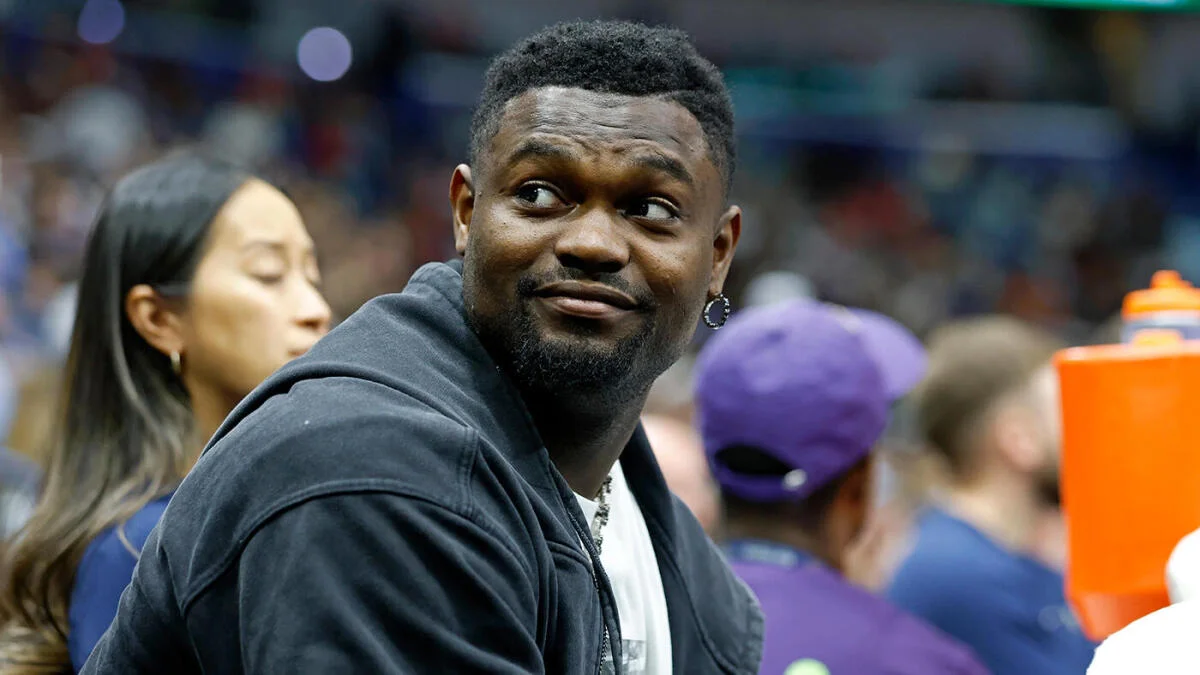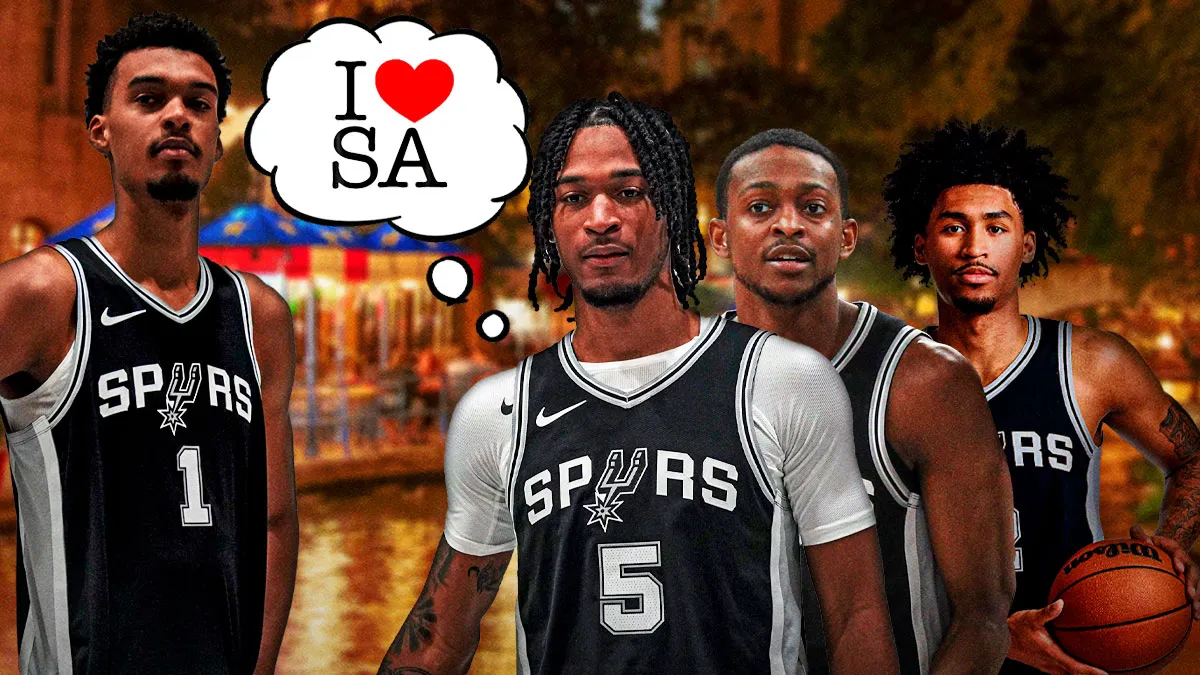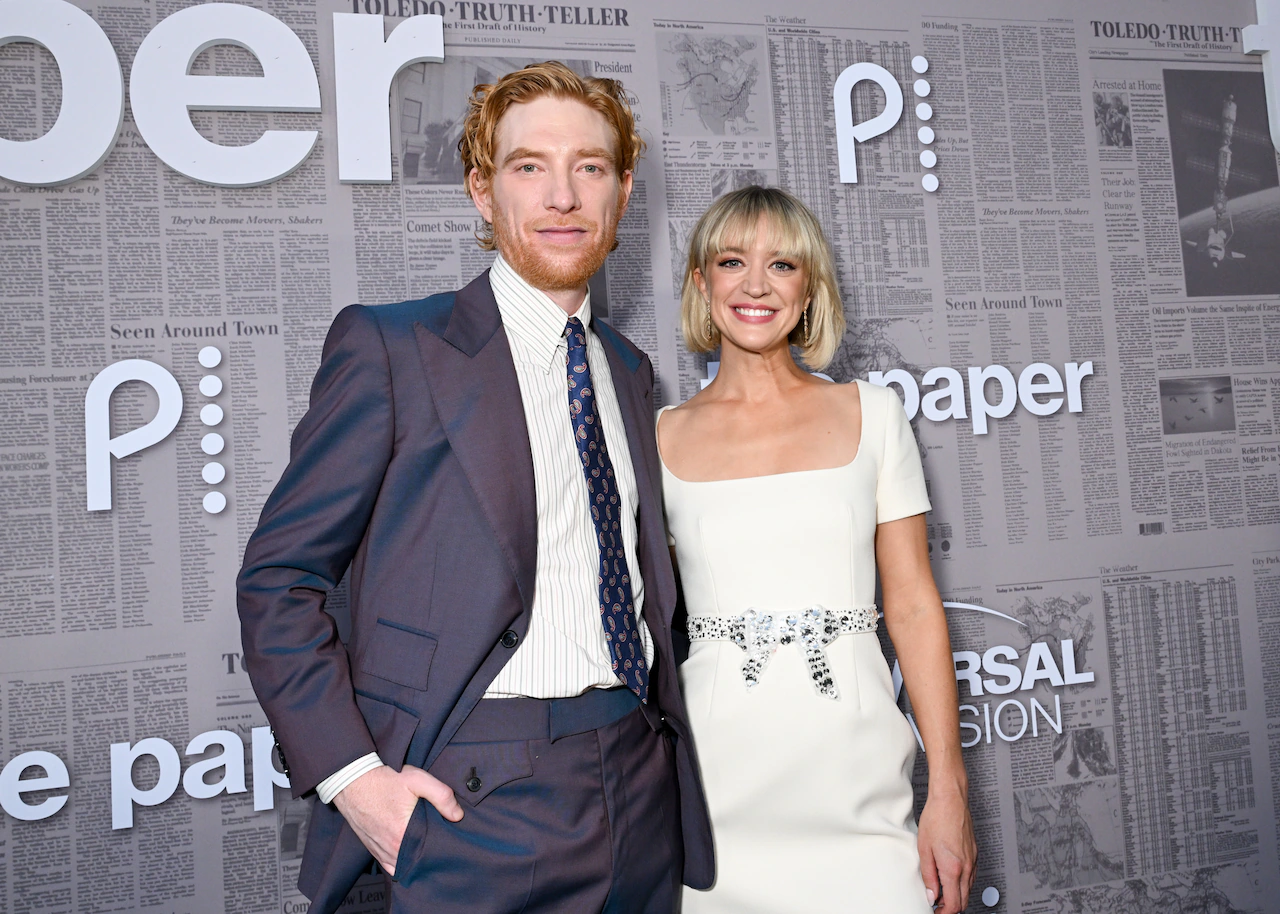NBA surprise trade candidates: Zion Williamson, Trae Young among players who could shockingly be moved

Roughly one year ago today, the Minnesota Timberwolves traded Karl-Anthony Towns to the New York Knicks. The timing of the trade — which came on the Friday before training camp began — downplayed the stunning nature of the deal itself, which sent Julius Randle and Donte DiVincenzo to the Wolves.
The Timberwolves were a reigning Western Conference finalist. The Knicks likely would have reached the Eastern Conference finals had they stayed healthy against the Indiana Pacers in the second round. It’s rare to see one such team trade an All-Star. To have two who play the same position traded for each other? That’s rare no matter when it happens.
We’re probably not going to see another trade of that magnitude in the immediate buildup to this year’s NBA training camp. The context that allowed for it simply isn’t here. The Knicks had just lost Isaiah Hartenstein in free agency and, because of injuries to Mitchell Robinson and Precious Achiuwa, were effectively without a proven, NBA-caliber center. They had to do something. Meanwhile, the Timberwolves were staring into the apron abyss and needed to find an out sooner or later.
The teams in that position a few months ago — most notably Boston and Phoenix — have already acted to avert their worst CBA-induced fears. The conditions for a trade of that magnitude just aren’t present at this moment.
But, as we know, things change quickly in the NBA. While trades can be individually surprising, we can never be too shocked by the idea of unexpected trades themselves. This league produces plenty of them. So as we approach training camp, let’s go over some of this season’s candidates for a trade similar to last year’s Towns stunner.
We’re not talking about frequently discussed big names here. Lauri Markkanen getting traded wouldn’t be a surprise. Giannis Antetokounmpo may eventually ask for a move, but there will be buildup. As the Mavericks learned with Luka Dončić, it’s typically better to create a bidding war for players of that caliber. Instead, these are names you’re not hearing about. They probably won’t be dealt, but if you examine the circumstances their team may face as the season progresses, they are names who might make sense in a deal nobody sees coming.
NBA surprise trade candidates
Rudy Gobert
Another Minnesota stunner? After another trip to the Western Conference finals? If anything, you could argue trading Gobert now would make more sense than the Towns trade did at the time. Remember, when the Wolves traded Towns, they were coming off of a season in which they came one game short of the No. 1 seed. Last season, they had to fight just to avoid the Play-In Tournament. They lost both Western Conference finals series in five games, but their first three losses to Dallas came by a combined 13 points. Oklahoma City, by contrast, had wins of 30, 26 and 15 points. The gap was much wider.
The Timberwolves are further away from a championship now than they were a year ago. Gobert is older. Nickeil Alexander-Walker is gone. The Thunder are more dangerous than they’ve ever been. Frankly, so is most of the Western Conference. That doesn’t mean the Timberwolves should blow up the entire roster. It does mean that a potential reboot around their younger players might make sense. Perhaps not coincidentally, the Timberwolves just used the No. 17 pick on a center, Joan Beringer. That’s a strange thing for a team to do when it is already paying three other big men a combined average of over 56% of the salary cap for the next three seasons.
Speaking of those other big men … how eager are most teams to hand out five-year, $125 million contracts to players they don’t intend to start long-term? It’s just hard to imagine Minnesota paying Naz Reid that much to be a full-time reserve. Reid could theoretically replace Julius Randle instead. He may be three years younger than Gobert, but he’s still 30, no spring chicken. Gobert is essential to Minnesota’s defense in a way that Randle isn’t on either end of the floor.
But Randle is a far harder player to trade. High-usage scorers with inconsistent jumpers are a tricky group. The best ones never move. The tier below are sort of in limbo. The best teams don’t want them because they typically have someone better controlling the ball and don’t want to cramp his spacing. The worst teams would usually rather tank for someone younger and cheaper and devote their possessions to developing their internal prospects. Rim-protectors and rim-runners like Gobert have a defined niche. More teams want and need them.
Imagine a world in which Minnesota is good, but not great, to start the season. They’re impressed with Beringer behind the scenes, and they’re anxious to start Reid to make the most of his contract. Knowing that another run at the Thunder with this group would be futile, wouldn’t the logical step here be to trade Gobert for youth, focus on developing players like Beringer, Rob Dillingham and Terrance Shannon Jr., and then hope to get back into the title mix a year or two from now? Tim Connelly is as bold as general managers get. His first Gobert trade proved that. If he thinks a second makes sense, he’s not going to hesitate.
Pascal Siakam
We’re not having this conversation if Tyrese Haliburton were still healthy. Hell, the Pacers might even be champions in that world. But that’s not the world we’re living in. In our present reality, the Pacers will be without Haliburton for a full season. They could have a diminished version of him when he comes back for the 2026-27 season. If they’re getting back the full-strength version of their offensive engine, it’s probably coming later in that return campaign, or more likely, a full year later when the 2027-28 campaign begins.
That suits most of the Pacers just fine. Andrew Nembhard, Aaron Nesmith, Bennedict Mathurin, Obi Toppin, Ben Sheppard and Jarace Walker are all in their mid-20s. They have time. It’s less clear for 31-year-old Pascal Siakam. He’s shot the ball extremely well in Indiana, but his jumper was a question in Toronto and may become one again without Haliburton orchestrating the offense. Defense tends to degrade with age, especially for bigger players who have to move around as much as Siakam does.
And then there’s the money. The Pacers were willing to let Myles Turner walk for nothing this summer ostensibly because of price. Whether they didn’t want to commit to a long-term deal for an older big man or had a no-luxury tax mandate from ownership isn’t clear, but this is one of the most frugal teams in the NBA. Paying Siakam the max to compete for the Finals was worth every penny. But given the traditional NBA aging curve, the best year left in his career is probably this one, and without Haliburton in place, they can’t take advantage of it. By the time Haliburton returns, Siakam may have aged beyond the co-star position he manned so ably last year. Yet with three max years left on his contract, he’ll get paid for that job regardless.
The Pacers quietly traded for their own 2026 first-round pick back before Haliburton got hurt. This isn’t a team that traditionally tanks, but this is also a somewhat unique opportunity. If they assume they’re going to be good for several years once Haliburton returns, then this is their last real chance to add a major cost-controlled piece at the top of the draft. Trading Siakam could net them more. As the 2025 playoffs proved, he’s still quite valuable to teams with healthy point guards. His window to win championships is right now. Indiana’s is a few years away. That misalignment very often leads to major trades.
Derrick White
Jaylen Brown would be fairly cumbersome to trade, especially during the season. Moving a $53.1 million cap figure without expanded rosters is exceedingly difficult without getting a similar contract back or taking advantage of the offseason’s expanded roster size. Moving him would also probably be too great of a shock for a returning Jayson Tatum in a year.
Asking the face of the franchise to lead what would effectively be a rebuilding or rebuilt team without a co-star would be unrealistic and a tad unfair. Besides, the number of teams that could comfortably fit Brown is smaller than you’d think. There’s not a long list of rosters with $50 million or so in easily movable salary, after all, and there are fair questions about how Brown would translate to a more traditional offensive ecosystem than the utopia Brad Stevens and Joe Mazzulla have given him in Boston.
But virtually every question mark that comes with a possible Brown trade is nonexistent where White is concerned. He makes essentially half as much as Brown does, so he’s a more plausible salary match. He fits on literally any team. His skill set is about as low-maintenance as it gets: high-level shooting, elite off-ball defense and very good on-ball defense, solid secondary shot-creation. He’s a higher-usage version of Fred VanVleet who dribbles into the paint a bit more. Certain teams may be more interested in Brown than White, but more teams would be interested in White than Brown. That’s how you drive up prices. It’s how players like Gobert and Mikal Bridges can command five first-round picks without being traditional stars. Players who can seamlessly fit on any roster are easier to trade than players who need a very narrow set of circumstances to thrive.
White’s circumstances are somewhat similar to Siakam’s. He’s 31. He’s never going to be more valuable than he is right now. There’s a misalignment here. By the time the Celtics fully reboot their roster, he’s probably going to be past his prime. But trading him now could help facilitate a gap-year tank and bring in assets the Celtics could turn into the next version of White. Brown will turn 30 right around opening night of the 2026-27 season. Tatum is coming off of a torn Achilles. Boston badly needs to counterbalance this with youth if it wants to meaningfully compete for more championships. The behemoth offers healthier win-now teams will inevitably make during the season could very well tempt Boston into a deal.
Zion Williamson
For the time being, Zion Williamson is probably untradable. The combination of his track record of poor conditioning and health, plus the ongoing rape lawsuit that arose in May probably make him toxic to the majority of the NBA. But trade circumstances can change quickly. Think of Zach LaVine. He obviously didn’t have the off-court concerns Williamson did, but the Bulls spent the entire 2024 offseason trying and failing to move him. A few good months on the court and they were able to do it for value. It went unnoticed as the Pelicans closed out a disappointing season, but Williamson was spectacular in January, February and March last season. A few more good months is going to tempt someone.
The Pelicans aren’t building as though they expect to keep Williamson. It’s hard to see him and 2025 lottery pick Derik Queen being compatible. They’re both ball-handling power forwards with defensive vulnerabilities and conditioning issues. New Orleans used its other pick on Jeremiah Fears, another high-usage ball-handler without a proven jumper. Their big free agent addition, Kevon Looney, is yet another non-shooter. You can plausibly believe that the Pelicans are trying to build around Williamson and just doing a bad job of it. This front office … umm … let’s say doesn’t exactly inspire confidence. But it seems likelier that they’re eyeing a post-Williamson future.
NBA front office rankings: OKC on top, Lakers and Mavericks low on list, new team falls behind Bulls at No. 30
Sam Quinn
And you know what? In pure basketball terms, there’s plenty of reason to be optimistic about Williamson’s future if it is indeed outside of New Orleans. While maturation is hardly guaranteed, it does tend to come for talented younger players who have been humbled before their prime. A better organization could do wonders for Williamson, who already appears to have made a bigger commitment to conditioning and fitness.
His productivity on the court has never been the question. His dedication and conduct off of it are, and some team is going to talk itself into trying to fix him if the Pelicans decide they’re fed up.
The assorted point guards
Remember how we covered the difficulties of trading Julius Randle? In many ways, those same difficulties apply to most sub-All-NBA-level point guards who either aren’t elite shooters or defenders. There is a class of point guard, or bigger primary ball-handlers, that is unimpeachable. Stephen Curry, Luka Dončić, Shai Gilgeous-Alexander, and then a level down, your Jalen Brunsons, Donovan Mitchells and now Cade Cunninghams. These players are so impactful offensively that teams drop everything to get them. You deal with their flaws because their strengths are so overwhelming. When a player like this hits the market, basically any team in the league could justify chasing them.
But then you drop down a level. These players still put up big numbers, but they’re not quite as good as the first two groups. They have real flaws. The teams that have players like those listed above wouldn’t trade for this next tier because, hey, why take the ball out of the hands of someone better? The teams trying to beat those teams are usually pretty fully-formed. Introducing someone who needs the ball that much risks throwing off the balance of everything else you’ve built. Younger teams tend to avoid them as well. Point guard supply far outweighs demand. They’d typically rather draft a player like this than trade for one who’s already getting paid.
Essentially, these are players around whom a whole offense needs to be built, yet who may not be good enough to do so at a championship level. There is a whole handful of such point guards in the NBA right now, all of whom make some measure of sense as trade candidates. The problem here is that recent history suggests their teams won’t be able to move them for anywhere near the value it would take to justify doing so. Here is a selection of those point guards:
Trae Young: The Hawks have tried to trade Trae Young in the past and found that there isn’t much interest. Now he’s entering a contract year. If the Hawks planned to offer him the max, they would have done so by now. Perhaps Young plays well enough on a roster that now suits him fairly well to earn a max down the line. However, until he signs, that uncertainty is going to lead to trade rumors. The primary issue here, though, is that Atlanta would have a hard time generating meaningful interest in a guard who struggles off of the ball and is a massive defensive liability. Some team would have to decide it’s ready to hand its offense over to him. And most teams just already have someone else they prefer to do that.
Ja Morant: The Grizzlies are currently in no man’s land. The Desmond Bane trade offered too much value to decline, but it put the Grizzlies pretty squarely in the Play-In mix. If Ja Morant still looked like the All-NBA force he was in 2022, they’d turn around and use those assets to reload around him. Now, as the injuries and off-court incidents stack up, it’s less clear that they should do so. His playing style is so acrobatic and high-risk that it’s plausible he just peaked young. Even if he can revert to his prior form, his shooting and defensive woes are still real. There’s not a massive market for players like that. Contenders don’t want their best players watching him dribble. He seemingly bristled at the more egalitarian offense the Grizzlies tried to introduce last year.
De’Aaron Fox: Last season, the Spurs were the rare team for whom it absolutely made sense to trade for a guard in this tier. They nabbed De’Aaron Fox. He wanted to be there. It was an easy win. And then they jumped in the lottery and got Dylan Harper. Right now, the Spurs have three guards for two long-term slots in Harper, Fox and Stephon Castle. Inevitably, one of those guards will be gone in two or three years as San Antonio figures out its true core. Plenty called for the Spurs to move Fox preemptively this offseason and focus on the youth. That’d be much more politically fraught than it sounds. Fox stuck his neck out for a San Antonio team that typically doesn’t recruit stars. Moving him right away sends a message to other players about how they might be treated if they also try to get to San Antonio. If nothing else, you don’t want to piss off an agent as powerful as Rich Paul. San Antonio has to let this play out for the time being. But sooner or later, one of those guards is moving. So it will be a storyline until it’s settled.
Tyler Herro: Herro is hurt and likely to miss the beginning of the season. For the first time since 2018, the Heat are entering a season without a defined direction. There’s no Jimmy Butler here, no obvious franchise player, and no immediately apparent means of acquiring one — as they typically have in the past. If they’re comfortable scuttling through a few .500 seasons, keeping the current core together makes some sense. Herro and Bam Adebayo are still relatively young, and as they learned in the Damian Lillard saga, Herro just doesn’t have much trade value around the league. But there’s a plausible argument for tanking here given just how uninspiring the Heat looked down the stretch. Adebayo is too critical to their organizational culture to move. That makes Herro the obvious suspect.
There are a few other names that broadly fall into this bucket. Darius Garland, if the Cavaliers disappoint in the playoffs again. LaMelo Ball, if the Hornets remain rudderless. But what these teams tend to find is that there isn’t a pot of gold waiting at the end of this particular rainbow. Small, offense-centric guards that aren’t consistent All-NBA picks aren’t quite a dime a dozen, but they’re common enough not to get the bigger trade packages that more versatile wings do. Again, think back to Bridges. You could argue he’s worse than every player we’ve listed. But no team would ever worry about his fit. That’s how Desmond Bane netted the package that he did. He’s better defensively than anyone we’ve covered in this section and he’s far less ball-dominant. The Magic didn’t want a Garland or a Young taking the ball away from Paolo Banchero and Franz Wagner. They wanted someone to amplify them when they have it.
So yes, any of these players are plausible surprise trade candidates, but they would be surprises as much because of these trends as they would their name power. If monster offers were out there for them, some would probably be gone by now. If one materializes, well, we’ll have a surprise blockbuster on our hands.



